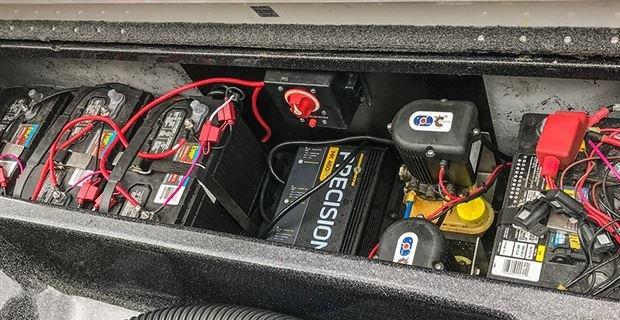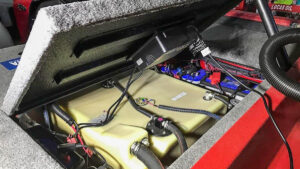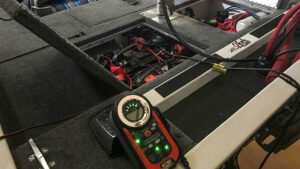Boat batteries are often overlooked by anglers, but that should never be the case; they’re the lifeblood of any fishing boat. If your budget is tight and you’re looking to cut costs, batteries are not the place to start.
Buying a good set of high-quality marine batteries is certainly an excellent starting point, but maintaining them is equally important. Nothing is worse than having a battery failure. It can absolutely ruin an otherwise great day of fishing.
Buying batteries can be confusing. You’ll hear a lot of jargon such deep cycle, starting, dual-purpose, AGM, lead acid, cold cranking amps, sealed, open cell, charge rates, lithium ion and recharges per life—so where in the world do you start?
The case for name brands
Choosing a battery takes a healthy amount of research. Understanding the nomenclature is great, but buying a reputable brand with a solid warranty is also important. It may cost a bit more, but in the long haul you’ll be rewarded with many benefits.
If you do have a failure, you can usually get most high-quality brands replaced at a pro-rated amount based on usage. Personally speaking, I always buy batteries that are available in multiple stores. You never know where you might be when failure occurs and I want as many options as possible for quick replacement. Name-brand, high-quality batteries generally have more widespread availability.
CCA and MCA: What’s the difference?
Look for batteries with higher CCA (cold cranking amps) and MCA (marine cranking amps) whenever possible.
CCAs measure current flow when starting an engine. The higher the number, the more amps it will deliver to crank the engine.
MCA rating is much more important for trolling motors and that number will normally be higher than CCA ratings by one-third. MCA is essentially the number of amps the battery will deliver in 30 seconds at 32 degrees Fahrenheit.
MCA and CCA are criteria that explain the same thing, but at different temperatures. A good rule-of-thumb is get as large a CCA/MCA rating size as you can find.
Understanding the different types of batteries
For marine use, always purchase marine batteries. They can be charged and drained multiple times and when buying, ask your retailer how many times they can be recharged. Battery efficiency is the battery’s ability to deliver high current without drop offs. That is a strong criteria for purchase in my book.
Lead acid or flooded-cell batteries were the norm for years, but have a much shorter life cycle than newer technologies and can be extremely heavy. Flooded-cell batteries have to be checked routinely for fluid levels and can be filled using distilled water—they are typically filled with sulfuric acid initially. Caps should be securely placed on the cells and compartments should be vented due to gases they produce when charged.
New technology includes Deep Cyle AGM (Absorbed Glass Mat) batteries; these are built much differently. They utilize an ultra-fine glass mat between two plates, they’re heavier for deep cycle batteries and they’re saturated in battery acid and are practically immune to vibration issues.
Lead acid batteries are not as effective because they can have issues with vibration. Gel cell batteries are similar to the AGM, but utilize a dense gel paste instead of an electrolyte liquid.
Deep cycle batteries simply have heavier plates.
Lithium ion is a new addition to the marine industry. Many come with a lifetime warranty which certainly adds to the price. Most anglers who go this route will move their batteries boat to boat when buying a new boat.
They also have a very low failure rate—as low as 1 percent—which again, makes them super expensive. Lithium ion batteries are also very light, as much as 70 percent lighter due to the use of lithium and they have a much larger capacity than AGM or gell cell batteries of equal size.
Another advantage is they hold voltage better and rebound better, too. They are also eco-friendly, in particular, if they are lithium ion phosphate due to non-toxic materials and no emission of gases from the battery. They charge faster, do not get charge memory and recharge more efficiently. It should be noted that many also need a special charger.
Size matters
What in the world does Group 24, Group 27 or Group 31 mean? It simply represents the physical size of the battery. Group 24 batteries have a smaller profile and will be lighter than a Group 31. The staying power of a Group 31 is usually longer and is often the reason for purchasing the larger footprint.
Most of us want to eliminate weight in our boats. We carry way too much tackle and gear so cutting weight of batteries can increase performance. Depending how much you fish can also determine what size battery you choose.
I don’t cut corners
I always look for deals with batteries, but that doesn’t necessarily mean I look for the best price. I look for the best batteries at the best price. There’s a big difference.
I currently run two types of AGMs in my boat. I use the Group 31 Optima Dual Purpose Blue Tops in my X21 Xpress, and to date, have had zero failures with these batteries. Weight is not an issue in this boat as I run a Yamaha 250 SHO and the boat is aluminum. For my small boat that I use on horsepower-restricted lakes, I use Group 24 Interstate batteries because it has a small engine and weight is a huge concern for performance.
Remember: Today’s electronics are power hogs and due to function, size and processors they can use a ton of battery life. In my small boat equipped with 10 and 12-inch Raymarine graphs, a H2 Hydrowave, T-H Marine Oxygenator and livewell pumps, I use a 800 CCA tractor battery just for them. My starting battery is just for starting the outboard and my trolling motor batteries are used only for the trolling motor. That is an effective use of space, weight and power efficiency.
Charging
Be sure to pick the best charger for your particular type of battery. I recommend a smart charger that shuts down to a trickle when batteries are fully charged.
Again, the charger needs to be equipped to handle the batteries you’re using. I have a ProMariner smart charger on my small boat with a Optima maintainer for the tractor battery and a four-bank Minn Kota Smart Charger for my big boat that’s compatible with all battery types.
Use determines life span of a battery
As a general rule, most batteries with heavy use will last approximately three years. Part of owning a boat is managing and maintaining a log of each battery’s purchase date and age.
Always make sure your batteries are fully charged after each use. Be prepared to spend some hard-earned dollars when replacing your marine batteries so be looking for discounts beginning in the third year. You will get some money—otherwise known as a core charge—for a trade-in when buying new batteries at reputable stores.














